
Once you know about toxins in most products, it can be really intimidating to find NEW products, whether it be personal and skin care products or home and cleaning products. The thought of finding an ingredient list and searching through each individual item can feel really daunting. And rightly so – the time that goes into choosing something as simple as a hand lotion or window spray can be absolutely mind boggling. Helpful solutions like the Think Dirty App and Skin Deep Database can contradict each other in the search for non toxic home items and beauty products.
I think the biggest piece of advice I can offer when it comes to looking up non toxic products and items is to cross reference and look for brand transparency. Products change over time, and it doesn’t even hurt to do a double check on what you’ve been using every now and then. When a company changes the ingredients they use, they’re not mandated to inform the consumer. Sometimes it’s a change for the better, but sometimes it could be an addition that leaves the product with undisclosed toxins.
This is why I almost love the idea of ingredient transparency MORE than trusting a database. But I think that both options are helpful and serve a purpose when you’re doing product research. There are a few nuances that are helpful when you go to look up products in either the Think Dirty App or the Skin Deep Database that can be critical in finding the information you need.
I’m all about teaching HOW to do something rather than just giving you a list of non toxic products you can trust. (Although, I do ALSO do that on my non toxic product page). If you know just how to look up items and look up products in a non toxic database, you’ll be able to decipher what’s healthy or not each time you’re about to make a purchase.
This week I’m going to layout just how to do your research with:
- Why I use Non Toxic Databases & Apps
- How to Avoid Green Washing
- How I use the Think Dirty App & EWG Database to Cross Reference
- My Favorite Non Toxic Databases & Certifications

WHY I USE NON TOXIC DATABASES & APPS
I have been using databases and apps that help me find non toxic products for a LONG time. Before there were even that many products within these databases, I was using them. There are few reasons why I still go back to these non toxic databases for products, even now:
Products Change: Manufacturers and brands change their formulas and products on a regular basis. This doesn’t always mean something negative, but it is something we as consumers need to pay attention to. Ingredients might change in a product due to new manufacturers, availability, reducing costs or trying to improve the product. If you notice, in databases like the EWG Database, they often reference a year of a product, which is important to know.
Checking Gifted Products: Gifted skin care and beauty products has been growing rapidly at our house with my oldest daughter entering her tween years (cannot believe how fast THAT happened). I’m very open with my kids about why we don’t use some products and why I’m very particular about things we bring in the house or put on our skin. If they get an item as a gift, I like to look it up before we start using it on a regular basis.
Overhauling My Product Stash: This hasn’t happened in a while, because it’s kind of a one and done activity, but every now and then I’ll find some hidden stash of products that I need to go through again. Whether it’s cleaning products, nail polish, makeup or my old stash of sunscreens (which should probably be thrown out anyways), I often use databases to check what’s currently in my collection. I then end up tossing old, old products or products that have toxic ingredients.
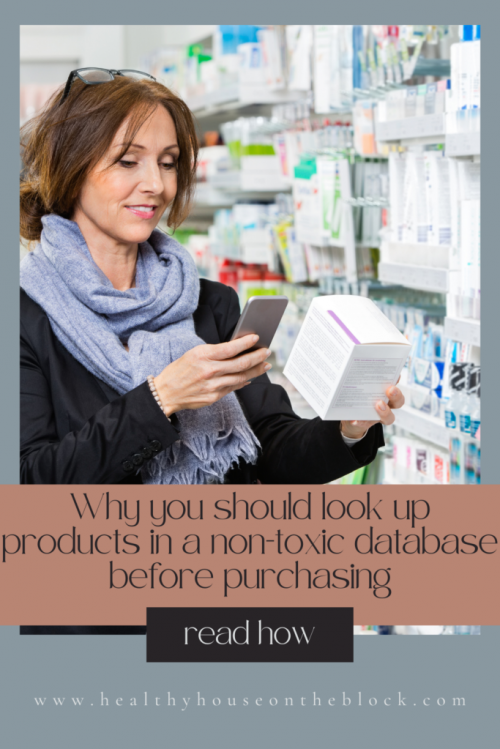
Seasonal Purchases: Because we have very defined seasons in Minnesota, we only use things like mosquito repellent and sunscreen during the warmer months. Often times I end up starting back at square one each spring looking up these products on the Think Dirty App or the EWG database. Because products can change from year to year, or honestly, I can’t remember what we purchased the year before. I find it easier to just look up a product’s ingredients to make sure it is non toxic.
New Information: Research is always shedding new light on our health and wellness. The opinion of professionals and researchers is changing all the time. We as consumers have to be able to pivot our thinking and products when that new information or study tells us something new. I think it’s important to mention that just one study doesn’t usually have me switching products, but when an ingredient has just finished a study that is for a long period of time or several studies have been released about it, I then reassess.

HOW TO AVOID GREENWASHING
Greenwashing is happening ALL over the place. Basically it’s packaging and claims of a low toxin product that really aren’t 100% true because the words being used are not regulated in any way. Products that claim “organic” without the USDA Organic certification may not be completely organic. Organic may apply to a part of the product or a single ingredient, not the product as a whole.
Without any sort of third party certification, you really need to be careful about the words on packaging and products. Some of the words you want to watch out for are:
- Organic
- Green
- Zero Waste
- Eco Friendly
- All Natural
- Certified Green
- Earth Friendly
- Chemical Free
- Non-Toxic
- Bio
- Eco
These words do show up on products that are absolutely making the right claim too. The trick is to find a product that is certified by a third party, not just claiming to be non toxic on their own.
My full list of Greenwashing terms and specifics on WHAT to look for can all be found in my course: The Healthy Home Blueprint
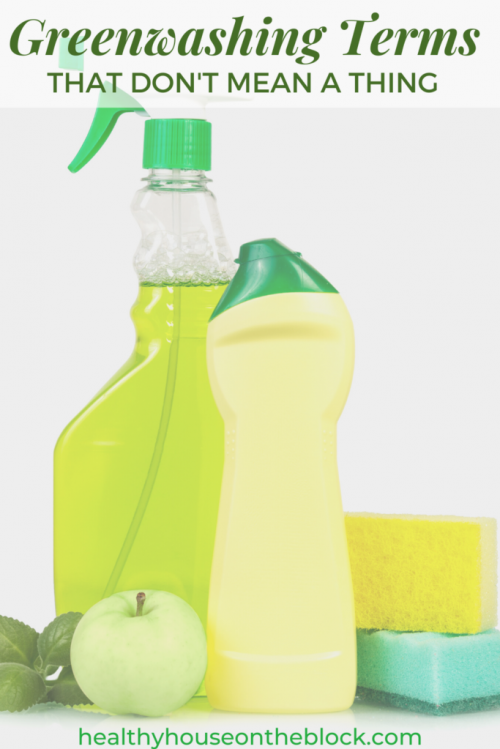
CERTIFICATIONS TO TRUST:

USDA Organic: In terms of beauty and cleaning products, this means the product must be at least 95% organic ingredients. They have a few different sub certifications as well including “100% Organic” (100% organic ingredient), “Organic” (95% organic) and “Made with Organic Ingredients” (70% organic ingredients).

EWG Verified: One of the most strict criteria for safety in products. EWG Verified means that the product scores a 1-2 in the Skin Deep Database. All ingredients must be disclosed to earn this verification, including fragrance.

Made Safe Certification: Ingredients and supply chain are examined to ensure that not only is the product safe for our use, but also for our world. They look at more than just the individual ingredients and look at how ingredients together accumulate in our world and body before being detoxified.
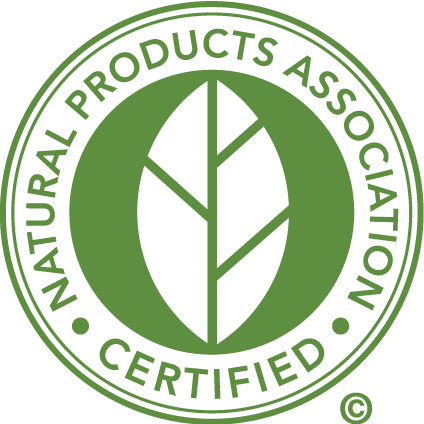
Natural Products Association: Specifically for personal care products, it requires there are at least 95% or more ingredients that are natural in origin. The natural ingredients may not be significantly altered through any processing and no ingredients may be suspected as a health risk.
HOW I USE THE THINK DIRTY APP & EWG DATABASE TO CROSS REFERENCE
I truly use databases like the Think Dirty App and the EWG Database as a starting off point for myself. I think it’s a great place to begin researching an item. Of course it depends on the type of item you want to purchase as well. If I’m looking for a new handsoap, I generally don’t have to research too long as there are just fewer ingredients.
On the other hand, looking for a great cleaner has taken me some time to find as I tried out several and they just have more ingredients all together.
Usually I start with finding the product on my Think Dirty App, and from there I look up the same product on the EWG Database. If there are “iffy” ingredients or a contradiction on an ingredient rating, I will look up that specific ingredient on MadeSafe or another website.
Sometimes the reason a toxin is listed is due the way it could potentially be used, or it’s based on how it reacts with another ingredient that may make it harmful. It’s kind of like the idea that too much of even a good thing can negatively affect our bodies. Even organic ingredients have potential to disrupt hormones and increase skin’s sensitivity to sun, etc.
This is exactly why I cross reference and then check ingredients when I see a yellow flag or there seems to be an inconsistency. Each database has its own set of requirements to give a product a high rating, and I think it’s dangerous territory to blindly trust one set of requirements without looking into why it was given a high rating.
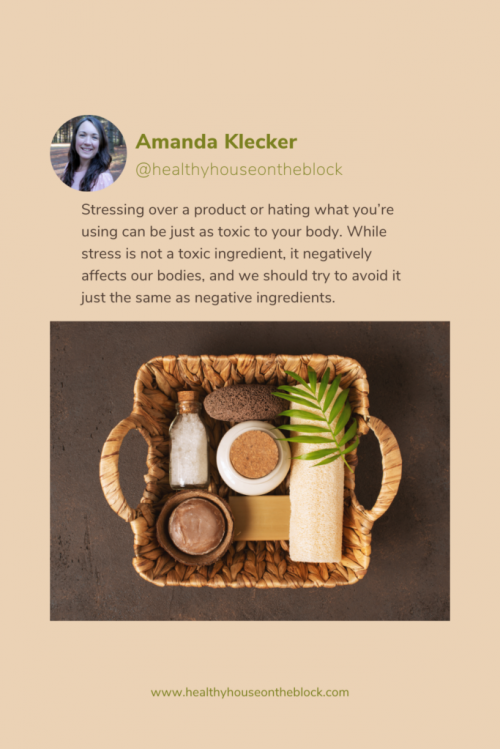
MY FAVORITE NON TOXIC DATABASES AND APPS
My two FAVORITE databases can be found in my course, The Healthy Home Blueprint, where I share how to use each of the ones above and my two favorites.

I think it should also be said that I don’t always choose the absolutely MOST toxin free product I can find. As with anything, each of our bodies and our homes are specific to us and our needs. My skincare needs will vary drastically from someone else’s, and what works for them may not work the same for me.
And so often times, I’ll start with trying a totally toxin free option, and if it just doesn’t work, I’ll allow myself to use a product that is on the “less toxic” end. I specifically pay attention to fragrance and hormone disrupting ingredients. Those are deal breakers for me, and I don’t allow them into my home if I can help it.
You have to remember that even choosing a less toxic product can sometimes give your body and home enough of a break that it makes an impact. Stressing over a product or hating what you’re using can be just as toxic to your body. While stress is not a toxic ingredient, it negatively affects our bodies, and we should try to avoid it just the same as negative ingredients.

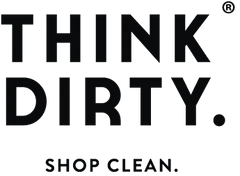
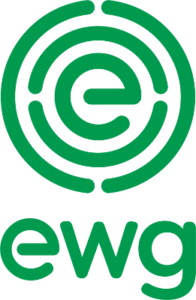
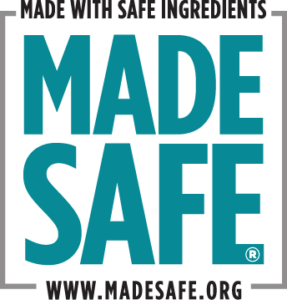
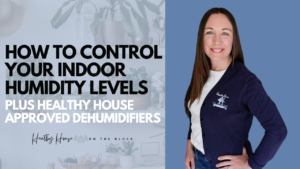


Pingback: TCE (Trichloroethylene) Toxins: A Deep Dive »
Pingback: Greenwashing & Your Healthy Home » Healthy House on the Block
Pingback: Preparing a House for the Winter Season: Non Toxic House Detox Plan - Healthy House on the Block
Pingback: Owning a Home: Detox Your Home this Winter Season
Pingback: My Healthy Home Expert Guide to Shopping for Everyday Products - Healthy House on the Block
Pingback: How to Shop for Non Toxic Home Products & Everyday Items -